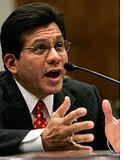 |
| Leonardo DiCaprio as FBI director J. Edgar Hoover. |
The new Clint Eastwood-directed bio-pic J. Edgar, starring Leonardo DiCaprio in the title role as Hoover, the legendary autocrat who sat atop the FBI for five decades, released this week its official trailer/preview. (To see it, click on the image at the bottom. The movie itself comes out in November.) The trailer runs just two minutes, 29 seconds — obviously too short to judge the entire film. But having spent two years of my life getting to know Mr. Hoover while researching and writing my own book about him called Young J. Edgar, I must say I liked what I saw.
 |
| Photo shows Hoover at about 22 years old. |
J. Edgar Hoover casts a long shadow over modern America, and a good, truthful movie about him is long overdue. Hoover was the most controversial law man in 20th century America. He served as director of the Federal Bureau of Investigation for an astonishing 48 years, holding the post under nine presidents from Calvin Coolidge in the 1920s to Richard M. Nixon in the 1970s. Though considered a hero and role model most of his life, investigations after his 1972 death confirmed massive abuses of power, illegal wiretaps, bugs, break-ins, and secret files on hundreds of thousands of people which he used as blackmail against presidents and movie stars. Hoover stands today as one of the most hated men in American history—a probably gay man who harassed gays, a possible descendant of an African American who harassed civil rights leaders, a top law enforcement official who placed himself above the law and ruined many peoples’ lives, all making him something of a monster.
But in truth, I found Hoover — at least the younger one I wrote about in my book — to be oddly sympathetic. Hoover did not step into the world as an evil villain. To a great extent, this side of him was shaped by events and forces that engulfed him during his lifetime, especially his younger formative years. This is not to make excuses for Hoover’s very long record on the dark side, but simply dismissing him as a cartoon villain and cross-dresser misses the deeper lessons.
Hoover came to work at the Justice Department in 1917 as a eager, bright young man ready to impress his superiors and save the country. Within four short years, he had risen to become deputy director of the Bureau of Investigation and had already played a lead role in the Palmer Raids, one of the most eggregious civil liberties abuses in US history. This transformation — from bright young man to hardened bureaucrat –fascinated me, especially since, to my eye, post-9/11 America seemed to be a period not unlike Hoover’s own formative years during the 1919-1920 Red Scare. It is a core theme of my own book Young J. Edgar, and, based on the trailer, it also seems to be at the heart of the new film.
I have been following the Eastwood-DiCaprio project for months through news reports and Washington gossip. I was impressed early on by two things–
-
First, the writer, Dustin Lance Black, who also wrote the screenplay for Milk (the movie about assassinated San Francisco supervisor Harvey Milk), reportedly spent several months in Washington while developing the script doing primary research at the National Archives and Library of Congress. To understand J. Edgar Hoover, there is no substitute for seeing the FBI files. They are simply stunning, a dazzling reflection of the man who created them. They make endlessly fascinating reading and paint a stark portrait of absolute power breeding absolute corruption.
-
Second, when the movie crew came to Washington, D.C. last May, one place they filmed was at the Library of Congress, one of my own favorite research haunts. I heard many stories from friends there about the movie crew and how they did their work: their eye for detail, making a point to show, for instance, Hoover/DiCaprio’s fascination with the Library’s card catalogue. The real-life Hoover actually worked at the Library of Congress during law school in 1914-17 and its card cataloue was a key inspiration for him in designing his FBI files.
The new trailer released this week shows the film dwelling not so much on the usual tawdry stuff about Hoover’s alleged cross-dressing or his actual fascination with celebrity sex gossip. Yes, he very likely had a gay relationship with FBI assistant director Clyde Tolson, but much of the rest is widely disputed. Rather, the film appears to focus on the real tension of Hoover’s life — his war (as he saw it) of good against evil, society against anarchy, patriots against traitors, subversives, and phonies, all giving him an excuse to bend the law as he saw fit and to hold power at all costs.
I fully expect to have my own list of nit-picks and criticisms once I see the entire film in November. But for now, based on the trailer, I like what I see.







